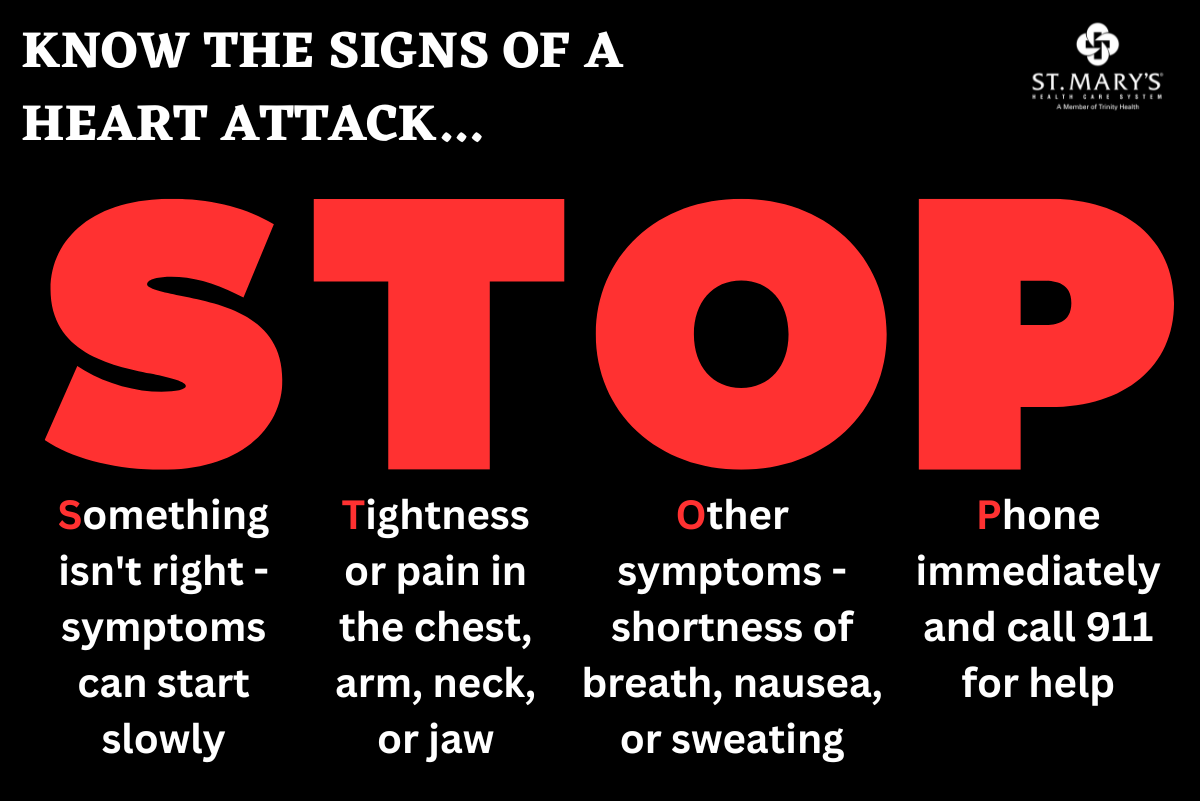Early Heart Attack Care
February 27, 2023Know the symptoms and call 911 when they appear
Heart attacks are the leading cause of death in adults in the United States. Heart attacks can also happen more than once to a person. Almost 50% of Americans do not know the signs of a heart attack and may not recognize the early stages of a heart attack in themselves or others. Early heart attack care can significantly increase a person’s likelihood to live when suffering a heart attack. Early recognition and response save lives.
What is a heart attack?
While heart disease is the leading cause of death in the United States, many people don’t know what happens during a heart attack. Here is a quick overview.
Your heart is made of muscle that contracts to pump blood throughout your body. Like all other muscle tissue, heart muscle must have a steady flow of blood to provide oxygen and nutrients and to carry away waste products. The coronary arteries carry oxygen-rich blood to the heart muscle.
A blockage in one of those vessels can interfere with blood supply to part of the heart and cause it to stop working. Within minutes, the affected muscle tissue begins to die. This is a heart attack. A heart attack can cause death or permanent damage to the heart if not treated quickly and properly. Time is muscle!
What causes a blockage?
A blockage is caused by atherosclerosis, which is a buildup of fats, cholesterol, and other substances in the vessel walls. The buildup of these substances is called plaque. The plaque narrows the vessels, which limits blood flow. Or, the plaque can burst and create a blood clot, completely blocking the blood vessel. When blood flow is stopped, a heart attack occurs.
Can I reduce my heart attack risk?
Most heart attacks are preventable. Modifying your lifestyle by learning risk factors can decrease your chances of heart attacks. Some risk factors include:
- A family history of cardiovascular disease
- High blood pressure
- Being overweight or obese
- Sedentary lifestyle
- Using tobacco products
- Metabolic disease, diabetes or other illnesses
- For women, it can also include birth control pills, a history of preeclampsia, gestational diabetes, or having a low birth-weight baby
Reducing or eliminating the use of tobacco products and alcoholic beverages can significantly decrease the risk of heart attacks. Maintaining a healthy diet and getting regular exercise are also key.
Signs and symptoms
Symptoms can be specific to the chest area or non-specific, meaning they affect your whole body. Recognizing the signs and symptoms can help reduce death and disability from heart attacks.
Specific
- Chest discomfort
- Chest pressure
- Chest ache
- Chest burning
- Chest fullness
Non-specific
- Weakness
- Sweating
- Nausea
- Dizziness
Symptoms can come and go for hours or even days before severe chest pain. While left side chest pain and arm pain is a common sign of a heart attack, there are other symptoms, known as atypical presentations, that individuals may feel. These include pain that spreads to the neck or jaw, back pain, nausea and vomiting, extreme weakness or fatigue, shortness of breath or labored breathing. These atypical presentations can affect anyone but are most common in women."
If you experience any of these signs or symptoms, call 911 immediately. Calling EMS brings emergency care – including resuscitation – to you faster and more safely than driving to the hospital.

